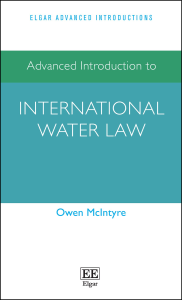
Volume 21/1
David Njagi Ngonge, Kariuki Muigua & Elvin Nyukuri
Ripples of Conflict: Drivers and Resolutions of Water Resource Disputes - A Case Study of Lake Turkana Basin of Kenya
Historically, the semi-arid and dry regions of the Kenyan borders have experienced perennial conflicts that revolve around the scarce water-related resources both on land and in water but spread around Lake Turkana, the largest desert lake in Africa. Lake Turkana, located in the Turkana Basin of Kenya, is a critical resource for the region. Covering an area of approximately 6,405 square kilometres, it is the largest permanent desert lake in the world. Besides, with its unique ecological and socio-economic implications, Lake Turkana has become a central point for studying the dynamics of conflicts resulting from water-related resource scarcity. The study sought to identify specific drivers of water use related resource conflicts in Lake Turkana basin of Kenya. Through a descriptive study design, the research applied a convenience sampling method targeting 90 respondents across all three sites, seeking about 30 participants per region. The study findings demonstrate that drivers of conflicts within the Lake Turkana Basin are not just locally domesticated, but also have external factors and influences including dynamics associated with inflammatory political speeches, economic, as well as environmental factors resulting in harsh climate. This is in addition to water management issues, high illiteracy and cultural pressures, ethnic tensions, historical grievances, scarce critical resources which are only concentrated in few locations, and geopolitical interests of neighbouring countries which contribute to conflicts in the region. The management of these conflicts therefore are best solved if these drivers of conflict are carefully understood as was the case for this study.
Maria Sanchez
Sustaining the Future Through Addressing the Past: the transitional justice functions of biocultural community protocols
Biocultural Community Protocols (BCPs) represent legal mechanisms for indigenous peoples and local communities (IPLCs) to assert collective regulatory rights to genetic resources associated with traditional knowledge. BCPs inherently speak to power asymmetries between state and subnational actors. Yet the literature on BCPs has insufficiently engaged with questions of whether, how, and the extent to which BCP author communities utilise these protocols to demand redress for past harms which have constituted those asymmetrical power conditions. Seeking to connect scholarship on BCPs with the transitional justice literature, I explore three hypotheses positing mechanisms by which IPLCs are leveraging BCPs to assert transitional justice demands. I then evaluate these hypotheses through analysis of the 34 BCPs registered with the United Nations ABS Clearing House.
Paul Kimani
Leveraging Carbon Trading for a Just Energy Transition in Kenya
This article explores how Kenya’s carbon trading framework can be leveraged to support a Just Energy Transition (JET) that aligns climate action with socio-economic equity. While Kenya is a leader in Africa’s voluntary carbon market, exemplified by its regulatory innovations and nature-based projects, serious concerns persist regarding community marginalisation and inadequate benefit-sharing. The article critically examines Kenya’s Climate Change Act 2016, the Carbon Markets Regulations 2024, and emerging frameworks for internationally transferred mitigation outcomes (ITMOs) under article 6 of the Paris Agreement. It identifies key challenges, including complex approval procedures, institutional overlap, weak enforcement mechanisms, and limited capacity for community participation. The analysis proposes a suite of legal and institutional reforms: recognising carbon credits as financial instruments, expanding project eligibility to include blue carbon and urban planning, clarifying institutional mandates, and strengthening community safeguards through mandatory Free, Prior, and Informed Consent (FPIC). It also advocates for streamlined regulatory processes and targeted capacity building. By embedding equity into the design and implementation of carbon markets, Kenya can transform carbon trading into a tool for inclusive development. The article contributes a critical legal perspective to the discourse on climate justice and offers policy recommendations for aligning carbon finance with constitutional values and sustainable development goals.
Viviana Morales Naranjo
Constitutionalism of Nature: Tensions Between Rights of Nature Defenders and Ecuadorian Constitutional Court
In 2008, Ecuador became the first country in the world to recognize the rights of nature (RoN) in the Constitution. Seventeen years later, it is necessary to analyze the work carried out by nature defenders and Ecuadorian Constitutional Court to develop jurisprudential lines about the foundations, content, and limits of RoN. This research has two objectives. On the one hand, we will identify the historical periods in which nature defenders filed the most lawsuits demanding protection and reparation of Nature at the Constitutional Court and the responses they have received. On the other hand, this research will explain the periods in which the Constitutional Court issued the most jurisprudential lines to explain the foundations, content, and limits of RoN and the degree of judicial independence that has existed in each composition of judges of the Constitutional Court from 2008 to 2025. This analysis will allow us to understand whether Ecuador has a Constitutionalism of Nature, that is, a Constitution and constitutional jurisprudential development that materializes Nature as a subject with rights and not a commodity.
Book Reviews
Advanced Introduction to International Water Law

By Owen McIntyre
Published by Edward Elgar, 2023
Reviewed by Sujith Koonan